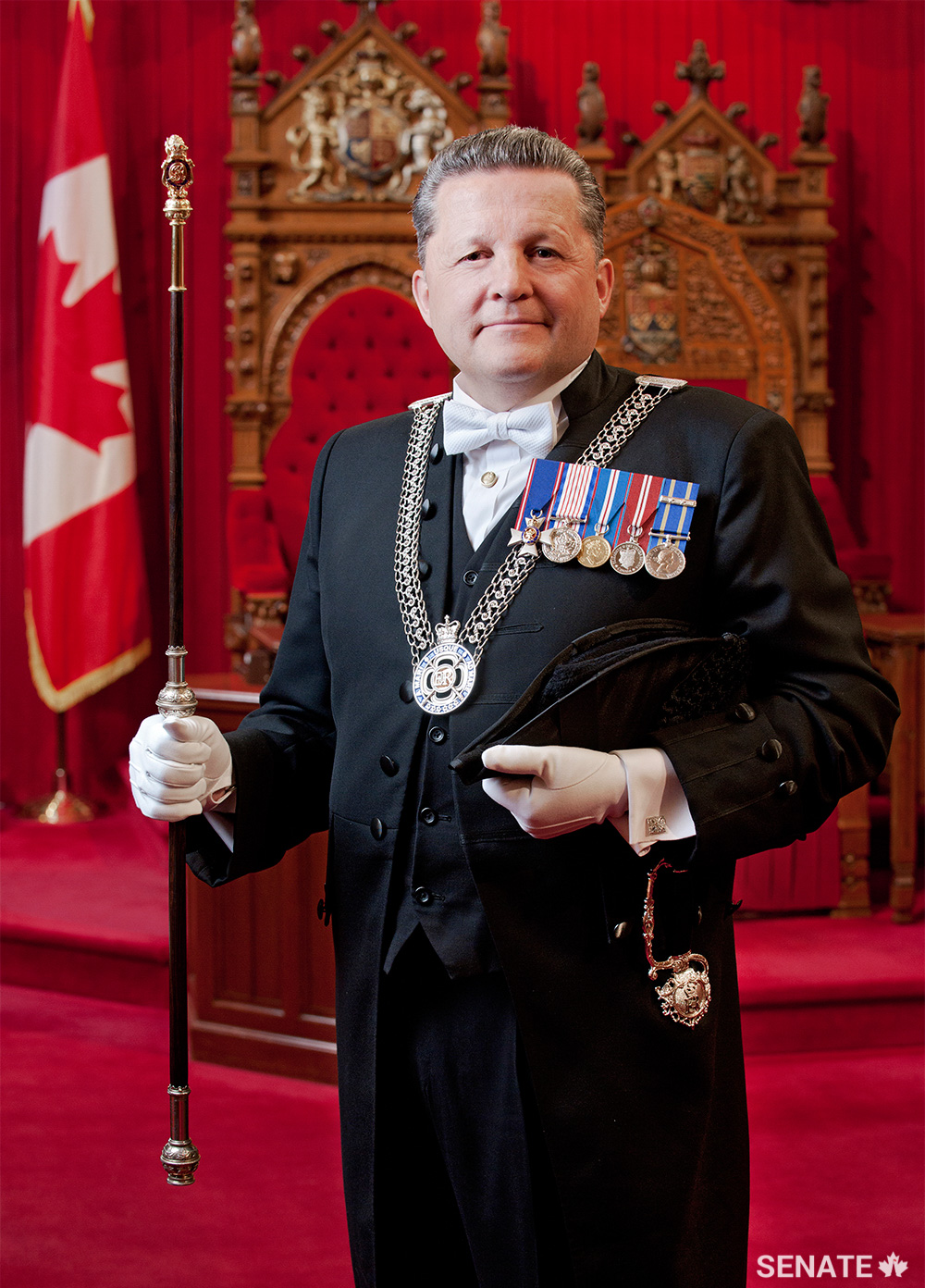Uniforms of the Red Chamber


The distinctive black uniforms of the Speaker, the Usher of the Black Rod, the Mace Bearer and table officers pay tribute to Canadian heritage and are deeply rooted in Britain’s Westminster parliamentary traditions. They are meant to distinguish and draw attention to their positions in the Red Chamber and have remained fundamentally unchanged since the 18th century.
The Speaker of the Senate presides over the Red Chamber, enforces the rules and ensures proceedings run smoothly. The Speaker and Speaker pro tempore, or “acting speaker,” can be distinguished from other senators by their uniforms.
The Speaker sports a black tricorn hat. This uniquely shaped hat dates back to the 18th century when it was once a popular choice for aristocratic and civilian men. Tricorn hats have a broad brim, pinned up on either side of the head and at the back, creating a triangular shape. The gutter-like brim became increasingly popular at the time because of its protection against rain as it forces the rainwater away from the wearer’s face and out through the gaps in the brim. In the Senate, only the Speaker and the Speaker pro tempore are entitled to wear one.
The Speaker also wears a silk robe with a flat hood and distinctive “wings” that hang from the open elbow sleeves. Fastened over the shoulders, hanging in the middle of the Speaker’s back is the wig bag, which was originally used to hold the ends of a powdered wig to protect the Speaker’s robe. Under the robe lies a pigeon-breasted, black wool tail coat with large cuffs and seven decorative buttons. The tailcoat covers a black vest and trousers, trimmed with a narrow silk band. A white shirt peaks over the top of the tailcoat, with French cuffs and winged collars, around which two white starched tabs are tied.
Table officers provide procedural advice to the Speaker, the Speaker pro tempore and members of the Senate, and keep track of speaking times for each senator. They wear the traditional tab necktie, the robe as well as the wig bag.
Carrying an ebony and gold rod, the Usher of the Black Rod can be seen leading the Speaker’s Parade at the beginning of each sitting of the Senate. As one of Parliament’s most senior officers, he serves as the Queen’s private attendant and messenger. The Usher is also responsible for security in the Senate Chamber and galleries.
The ebony cane, referred to as the Black Rod, dates back 600 years to the British Parliament. It is, unfortunately, not the original Black Rod from Confederation, as that one was lost in the 1916 fire that destroyed Canada’s first Parliament building. Today’s rod boasts an intricate golden lion on top, holding a shield with a royal cypher. Added to the middle knob of the rod is an engraving with Queen Elizabeth II’s name, forever tying her reign to the Senate. The clothing worn by the Usher of the Black Rod differs only slightly from that of the Speaker as he does not wear a robe. Also, instead of the tab necktie, the Usher sports a white bow tie, a bicorne hat and a ceremonial sword.
Around the time of Confederation, Senate page uniforms came in only one size so pages had to be small enough to fit in them. Today, the page uniform includes a black suit, a black bowtie and white gloves. Under the direction of the Usher of the Black Rod, Senate pages are responsible for assisting Senators and ensuring the effective operation of the Senate and its committees. They also retrieve resource material from the Library of Parliament and work in Senate administration when the Senate is not in session. Undergraduate students from the National Capital Region currently fill the role of Senate pages.





